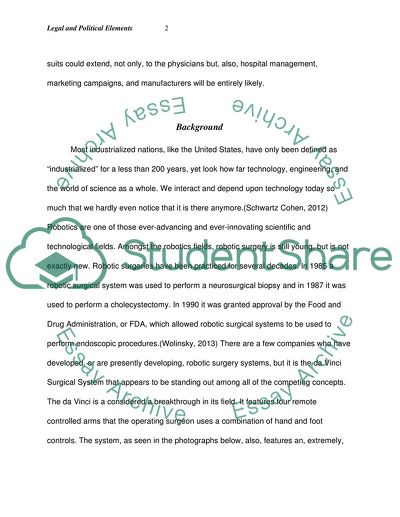Cite this document
(Robotic Surgery - Political and Legal Influences Research Paper, n.d.)
Robotic Surgery - Political and Legal Influences Research Paper. Retrieved from https://studentshare.org/medical-science/1799672-political-and-legal-influences-of-robotic-surgery
Robotic Surgery - Political and Legal Influences Research Paper. Retrieved from https://studentshare.org/medical-science/1799672-political-and-legal-influences-of-robotic-surgery
(Robotic Surgery - Political and Legal Influences Research Paper)
Robotic Surgery - Political and Legal Influences Research Paper. https://studentshare.org/medical-science/1799672-political-and-legal-influences-of-robotic-surgery.
Robotic Surgery - Political and Legal Influences Research Paper. https://studentshare.org/medical-science/1799672-political-and-legal-influences-of-robotic-surgery.
“Robotic Surgery - Political and Legal Influences Research Paper”, n.d. https://studentshare.org/medical-science/1799672-political-and-legal-influences-of-robotic-surgery.


